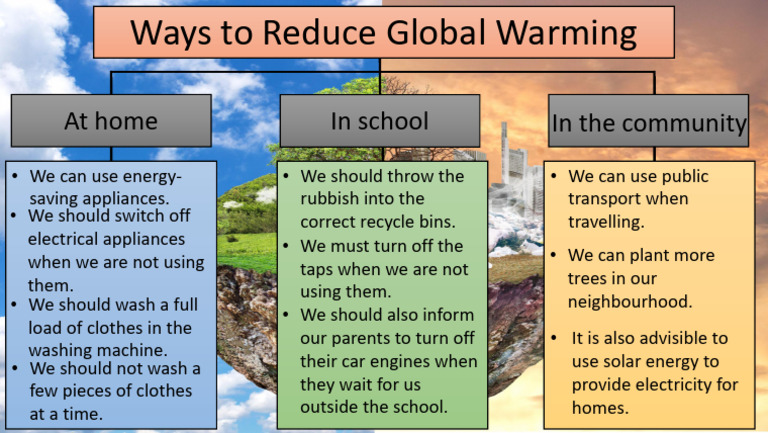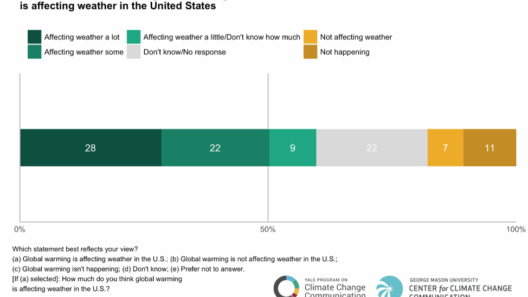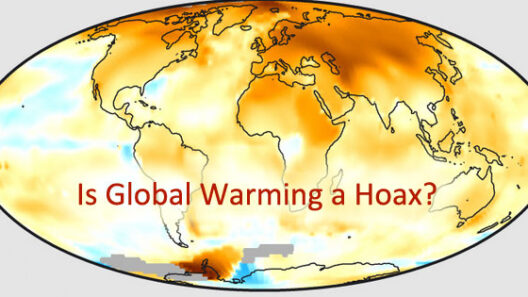Global warming, much like a slow-dripping faucet, subtly yet inexorably alters the course of our planet’s climate. Each drop, representing greenhouse gas emissions, accumulates until the basin of our environment overflows, leading to catastrophic consequences. As stewards of Earth, it is incumbent upon us to adopt proactive methodologies in combating this existential threat. A concerted effort towards understanding its intricacies and implementing efficient action plans is paramount for reversing the tide of climate change.
Understanding the Mechanism of Global Warming
To embark on an effective journey toward reducing global warming, a fundamental grasp of the underlying mechanisms is essential. Global warming is primarily instigated by an increase in the concentration of greenhouse gases (GHGs) in the atmosphere, which trap heat and render our planet a veritable greenhouse. Carbon dioxide, methane, and nitrous oxide occupy the spotlight in this harmful ensemble. Their sources range from fossil fuel combustion to deforestation, with each contributing to the atmospheric burden. This multifaceted issue necessitates a holistic approach, recognizing that reducing emissions from one sector alone will not suffice.
Transforming Energy Production
The most impactful lever for reducing global warming lies in the transformation of our energy paradigm. Transitioning from fossil fuels to renewable energy sources such as solar, wind, and hydroelectric power is not merely an option; it is an existential imperative. The allure of renewable energy extends beyond eco-friendliness; they encapsulate the potential for economic revitalization and job creation. As the sun’s rays kiss solar panels, they whisper promises of sustainability and resilience. A global pivot towards renewables could drastically diminish GHG emissions while also fostering energy security.
Enhancing Energy Efficiency
Concurrently, enhancing energy efficiency is critical. The modern landscape is riddled with opportunities to optimize energy use. From residential homes boasting energy-efficient appliances to industrial sectors implementing advanced technologies, the potential for energy savings is monumental. For instance, LED lighting, capable of using up to 80% less energy than traditional incandescent bulbs, illuminates the path toward reduced energy consumption. Moreover, constructing buildings with energy efficiency at their core—through innovative designs and materials—can materially contribute to lowering our carbon footprint.
Transportation: A Necessary Revolution
The transportation sector is an emblematic battleground in the fight against global warming. Cars, trucks, and planes exude copious amounts of emissions. A shift towards electric vehicles (EVs), supported by the necessary infrastructure such as charging stations, can catalyze this revolution. Furthermore, advocating for public transport systems, cycling infrastructure, and pedestrian-friendly urban planning is no longer a whimsical dream but a necessary strategy. Public transportation can alleviate congestion, reduce emissions, and cultivate a sense of community, rendering cities not just more livable but also more sustainable.
Carbon Sequestration and Technological Innovation
While attacking the root causes of emissions is vital, technological innovation must play a pivotal role in mitigating climate change. Carbon capture and storage (CCS) technology, often sitting at the confluence of hope and skepticism, holds the potential to sequester CO2 from industrial processes before it reaches the atmosphere. Concurrently, advancements in agriculture—think bioengineering and sustainable practices—can bolster the planet’s capacity to absorb carbon. Agroforestry, aligning agricultural production with forest conservation, exemplifies a harmonious coexistence of human activity and nature.
Reforestation and Restoring Ecosystems
As the lungs of our planet, forests possess an innate ability to sequester carbon while fostering biodiversity. To counteract global warming, reforestation emerges as an imperative. Trees function not only as carbon sinks but also as vital habitats for flora and fauna. Expanding protected natural areas, restoring wetlands, and engaging in permaculture can regenerate ecosystems that have been beleaguered by human activity. This restorative justice towards our environment can incite a rejuvenation of both flora and fauna, their resilience offering a beacon of hope.
Community Engagement: Grassroots Movements
Even the most comprehensive plans falter without the involvement of the community. Grassroots movements have historically demonstrated the tremendous power of collective action. Mobilizing communities to embrace sustainability through local initiatives—whether it be community gardens, local cleanups, or educational workshops—can galvanize populations toward a common cause. This social fabric, woven together by shared values and collective goals, can become a formidable force against apathy and resistance.
Policy Advocacy and Global Cooperation
In the grand scale of climate action, policy advocacy remains indispensable. Engaging with legislators to establish stringent regulations on emissions, providing incentives for renewable energy adoption, or promoting conservation efforts can create a conducive environment for positive change. Organizations and citizens alike must rally for international cooperation, recognizing that climate change knows no borders. Climate accords and agreements signal a global consciousness, underscoring the necessity for collaboration in this fight against a shared adversary.
Conclusion: The Role of Individual Actions
Ultimately, the onus of reducing global warming rests not solely on governments and industries but also on individuals. Each contribution matters. Consuming responsibly, opting for sustainable products, and educating oneself and others foster a collective consciousness that can lead to substantive changes. Every action, however small, is akin to a ripple in a pond—its effects can radiate outward, creating a wave of transformation. In this unprecedented epoch, embracing our role as caretakers of the planet is indispensable. The urgency is palpable, but the possibility of a sustainable future is within reach for those who dare to act.







